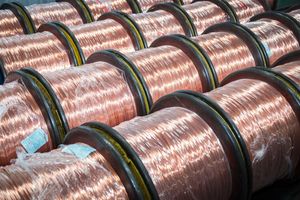Throughout history, swords have been more than just weapons. They represent power, honor, and artistic mastery. Two types that continue to captivate collectors, martial artists, and history enthusiasts alike are the Saber Sword and the Damascus Sword. Both carry a unique legacy, blending tradition, craftsmanship, and modern relevance. Let’s explore how these legendary blades shaped history and why they remain so valued today.
The Cultural Impact of the Saber Sword
The Saber Sword is instantly recognizable for its curved blade, single edge, and unmatched cutting ability. Historically, sabers became popular among cavalry units, particularly in Eastern Europe and Asia. Their design allowed for swift, powerful strikes while riding on horseback, making them one of the most effective battlefield weapons of their time.
In European history, the saber became a symbol of status and skill. Officers often carried ornate versions that were as much ceremonial as practical. In martial arts traditions, especially in Chinese and Japanese disciplines, sabers were admired for their balance and fluid motion, making them a favored weapon for both combat and training.
Today, collectors and enthusiasts appreciate the saber sword not only for its battlefield utility but also for its artistry. Modern reproductions often combine traditional forging methods with contemporary materials, making them suitable for both display and practical use.
Damascus Sword: A Masterpiece of Steel
If there is one sword that has fascinated the world for centuries, it is the Damascus Sword. Famous for its flowing water-like patterns and legendary sharpness, Damascus steel has been celebrated since ancient times. Originating in the Middle East, these swords were said to cut through armor with ease and retain their sharpness even after heavy use.
The distinctive wavy design on the blade is not just aesthetic, it reflects the unique forging process that involved layering different types of steel together. This technique created blades that were both flexible and extremely durable, a rare combination in early metallurgy.
Owning a Damascus sword was once considered a mark of prestige, reserved for warriors and leaders. Even today, artisans attempt to recreate the mystery of true Damascus steel, making modern versions that honor the same craftsmanship and visual beauty.
Comparing Saber and Damascus Swords
While both the saber sword and Damascus sword hold iconic status, their differences highlight the diverse traditions of sword-making.
- Design: Sabers are curved and primarily optimized for slashing attacks, while Damascus swords vary in shape but are celebrated for their material and durability.
- Origins: The saber is deeply tied to European and Asian cavalry warfare, whereas Damascus steel emerged from Middle Eastern blacksmithing traditions.
- Symbolism: Sabers symbolize swiftness, honor, and military excellence. Damascus blades embody artistry, mystery, and unmatched sharpness.
Both swords showcase how culture, geography, and innovation shaped weapon design through the centuries.
The Modern Appeal of Historic Blades
In the 21st century, swords may no longer be practical battlefield tools, yet their demand has not declined. Collectors treasure these pieces for their historic and cultural significance. Martial artists still practice with sabers for discipline, speed, and fluid motion. Damascus swords, on the other hand, are admired as luxury items often displayed as centerpieces in private collections or given as meaningful gifts.
The popularity of swords has also been boosted by movies, anime, and video games. Many fans seek replicas that reflect their favorite heroes’ weapons, making sites like TrueKatana a reliable source for authentic, high-quality pieces. Whether you’re looking for a functional training sword or a display-worthy blade, modern reproductions ensure that these ancient weapons remain alive in contemporary culture.
Choosing the Right Sword for You
If you’re considering purchasing a sword, the decision often depends on what you value most:
- For martial arts practice or reenactments: The Saber Sword is a versatile option due to its curved design and ease of handling.
- For collectors and enthusiasts: The Damascus Sword offers unmatched beauty and craftsmanship, making it a prized centerpiece.
- For display purposes: Both swords make excellent decorative pieces that tell a story of history and tradition.
When shopping, always prioritize authenticity, craftsmanship, and reliable sources. TrueKatana, for example, offers a wide range of traditionally inspired swords that combine functionality with artistic quality.
Final Thoughts
The Saber Sword and the Damascus Sword are more than relics of history—they are timeless symbols of human creativity, courage, and skill. While the saber reflects the spirit of cavalry and martial arts, the Damascus blade represents the pinnacle of ancient metallurgy. Together, they remind us of a world where weapons were not just tools of war, but also works of art and cultural pride.
Whether you are a martial artist, a history enthusiast, or a collector searching for authenticity, these swords offer more than just steel, they offer a story. Investing in one of these iconic blades is like holding a piece of history in your hands.






